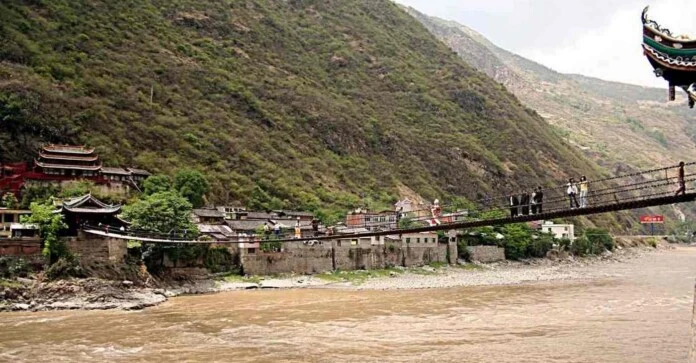On an upper tributary of the mighty Yangtze River, the reversal of a century of industrial development has made way for rare fish species to return to their ancestral spawning grounds.
The Yangtze, Asia’s longest river, is dotted with thousands of dams and hydroelectric stations that historically blocked migratory species like the Yangtze sturgeon and Chinese paddlefish from reaching upstream habitats to reproduce.
Trapped between dams and heavy river traffic, sand mining, and commercial fishing, these ancient fish were driven to extinction in the wild—declared extinct by the IUCN in 2022.
But now, a bold restoration project along a 250-mile stretch of the Red River, a tributary of the upper Yangtze, has demolished 300 dams and hydropower plants, opening up vital stretches of river. As a result, reintroduction efforts have seen adult Yangtze sturgeon migrate and spawn in their historic habitat—likely for the first time this century. A survey conducted in 2000 found no sturgeon or paddlefish fry.
The Chishui He, or Red River, which flows through Yunnan, Guizhou, and Sichuan provinces, was once home to 357 dams and 373 small hydropower stations. Despite this industrial burden, ecologists still considered it the last refuge for Yangtze aquatic wildlife.
According to the state-run Xinhua News Agency, 300 dams and another 300 power stations have now been decommissioned or dismantled, restoring hundreds of miles of river to their natural state.
With the river flowing freely, scientists released thousands of sturgeon fry into the waters, followed by 20 mature Yangtze sturgeon in April. The goal was for them to remember their ancient migratory route and return to the Red River to spawn.
Much like salmon in the Klamath River in the U.S., which recolonized newly accessible habitat almost immediately after four dams were removed, the Yangtze sturgeon began displaying spawning behavior within a month of their release.
“This achievement indicates that the current ecological environment of the Red River can now meet the habitat and reproductive needs of Yangtze sturgeon,” said Liu Fei, a researcher at the Wuhan-based institute involved in the reintroduction.
The revival of the river system is part of a broader ecological restoration effort across the Yangtze Basin. In 2020, the Chinese government enacted a 10-year fishing ban along the Yangtze to allow depleted species to recover. Additional dams and power stations beyond the Red River have also been shut down, and sand mining has been banned.
This nationwide focus on river health is already bearing fruit. In June, Chinese scientists completed a comprehensive survey of freshwater ecosystems and found that over 2,500 bodies of water, including the Yangtze, now boast “excellent water quality.”
